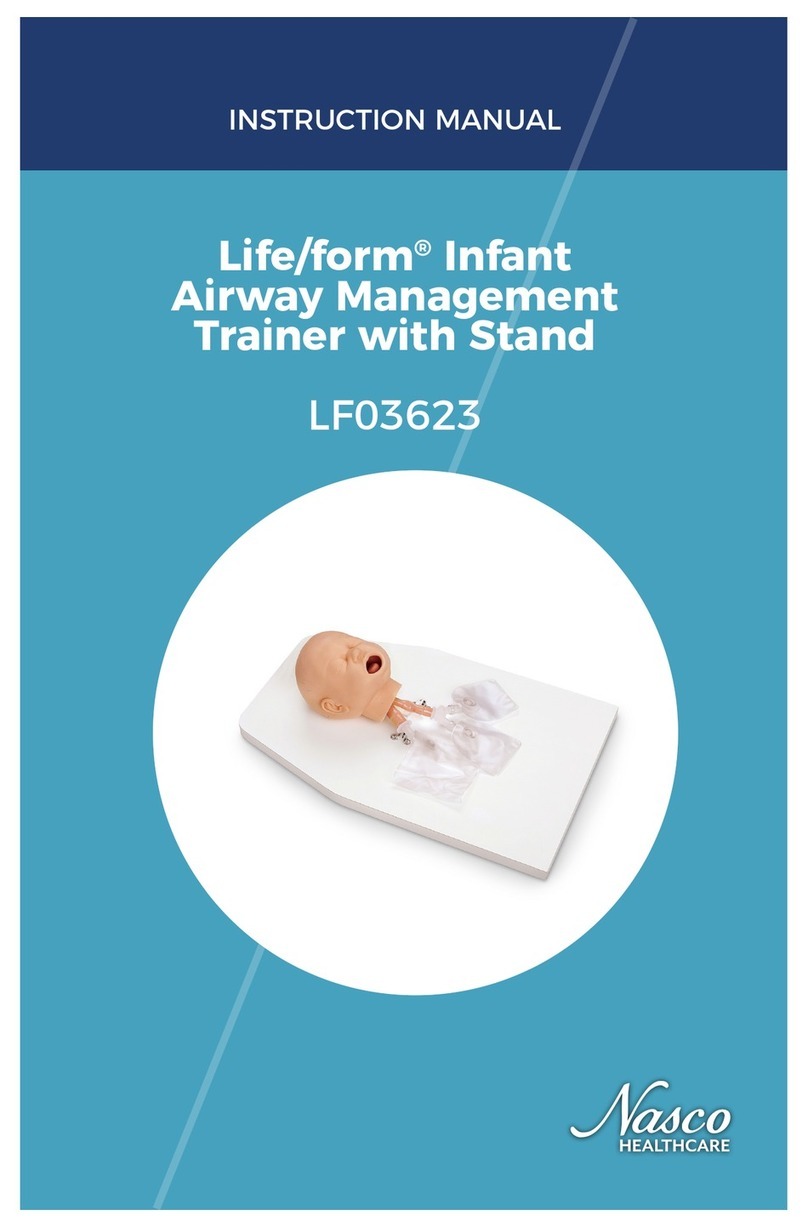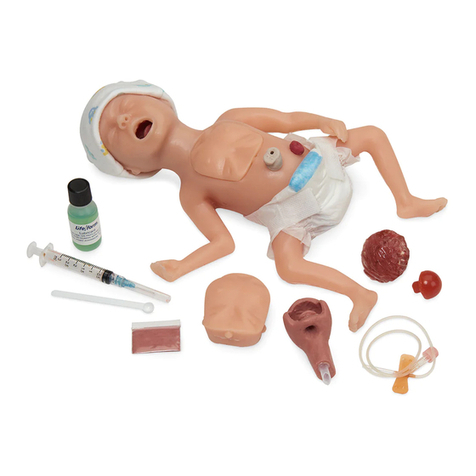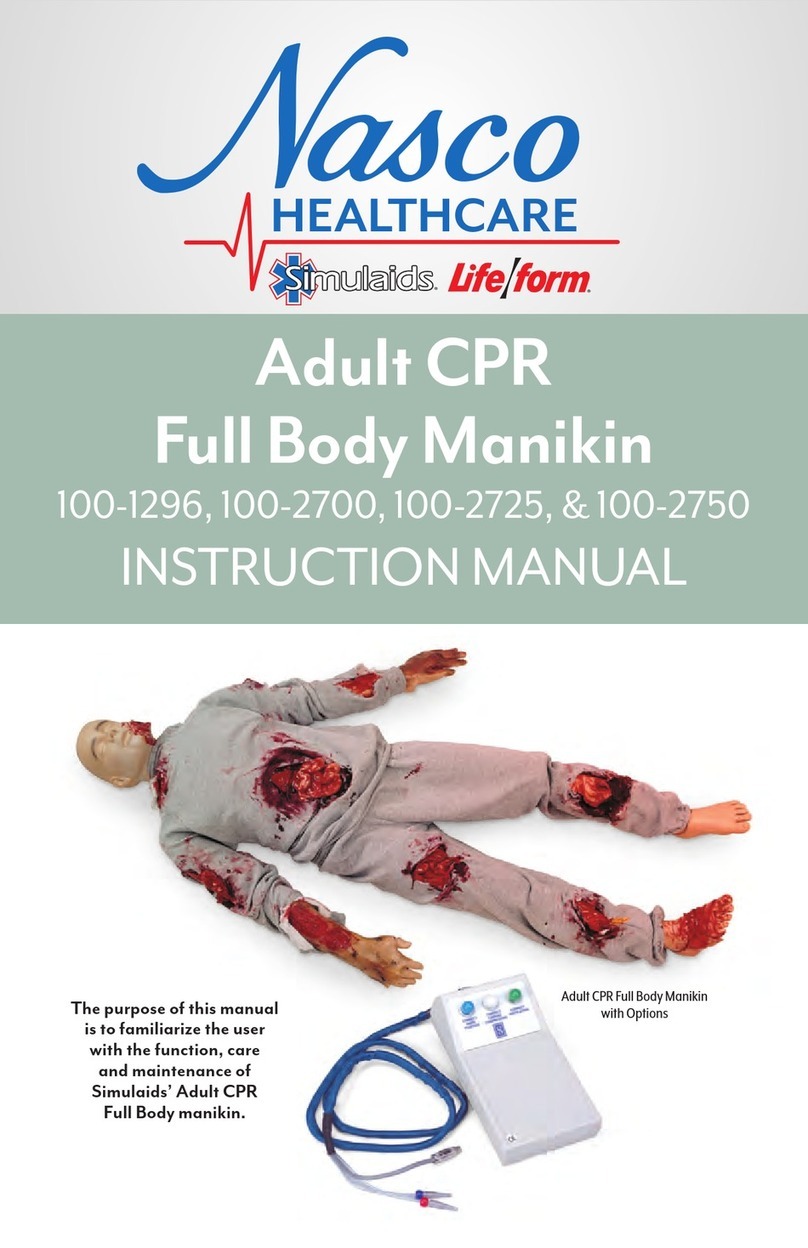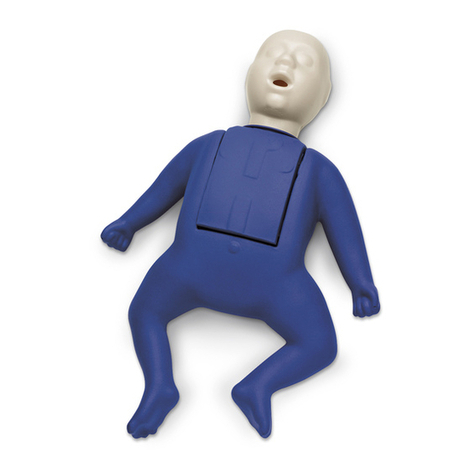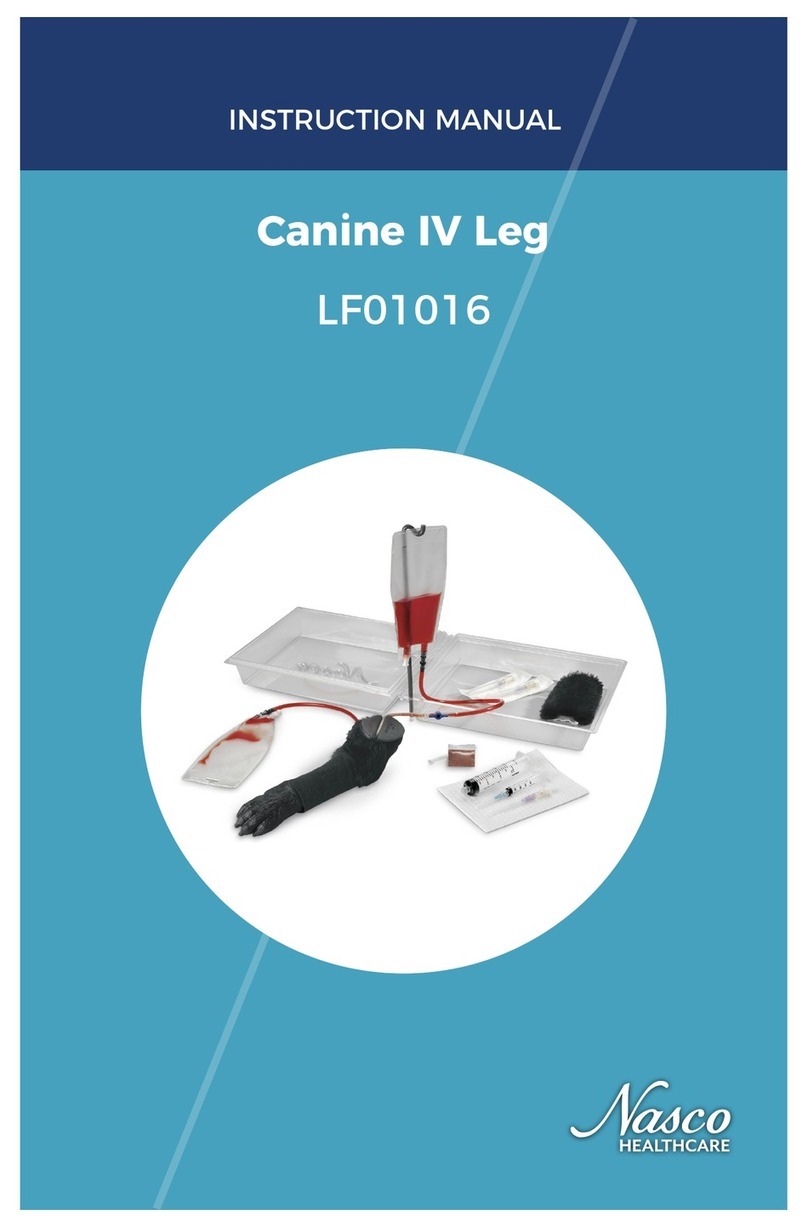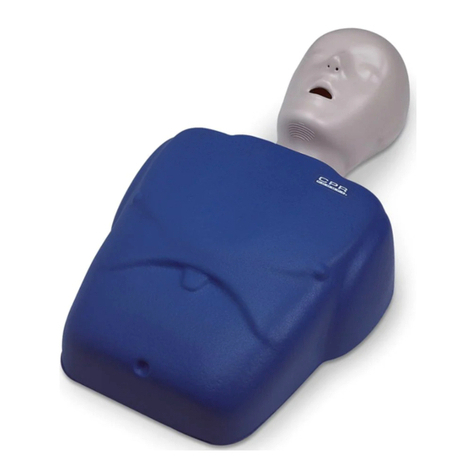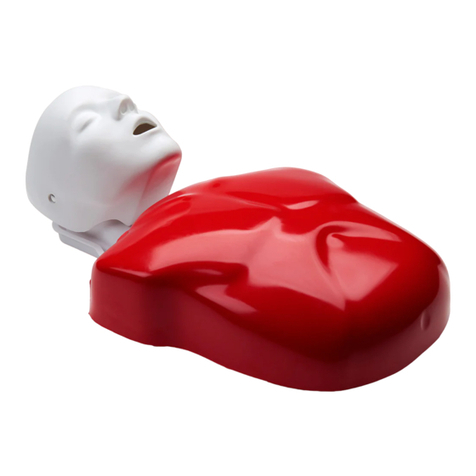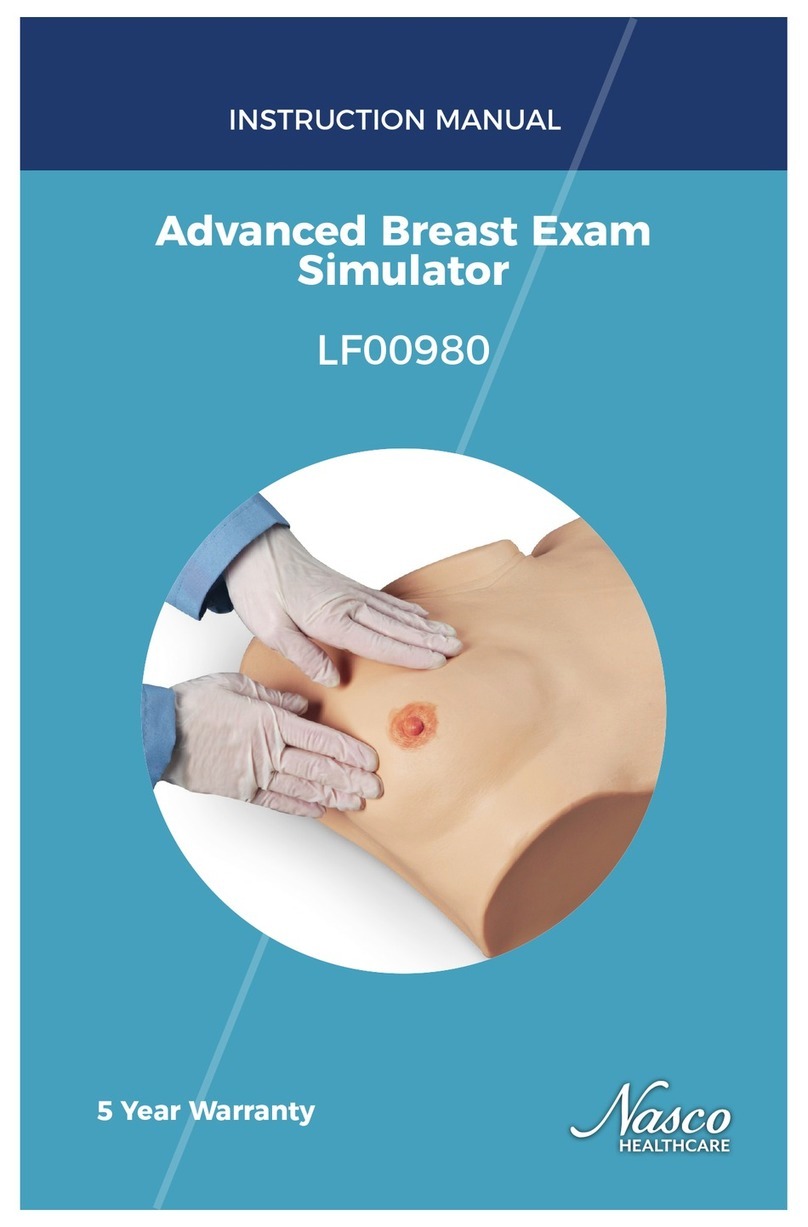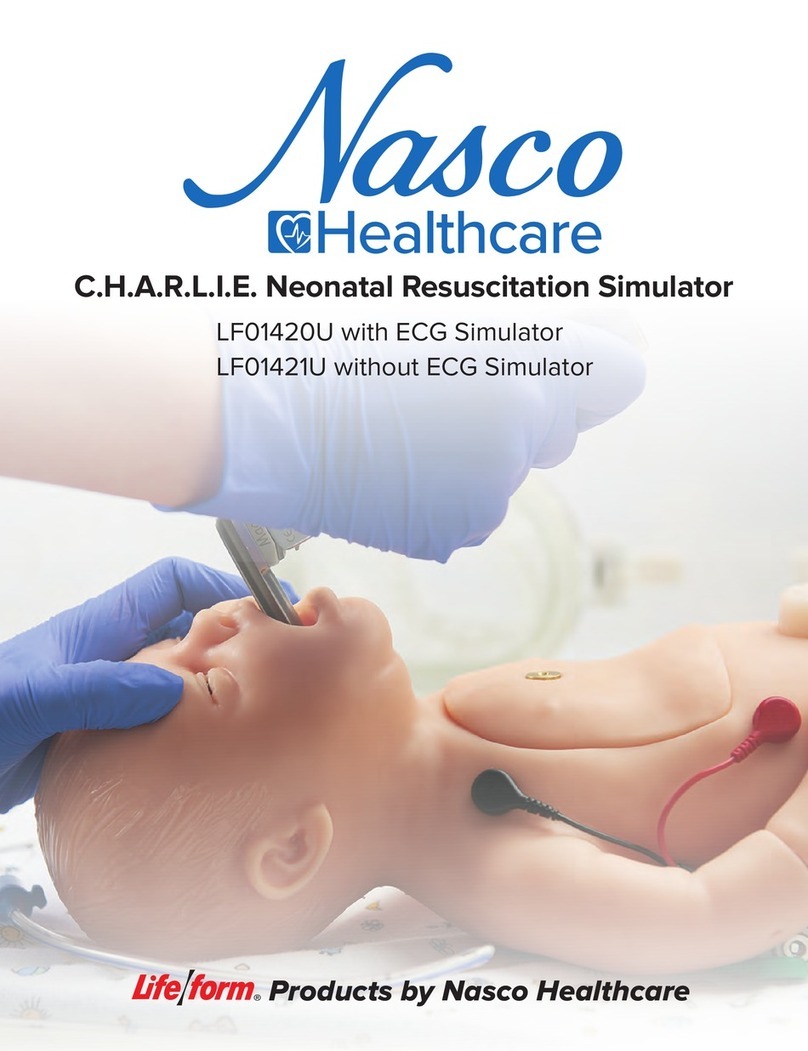
either the phase 1 or phase 2 Korotkoff sounds. If it is desired to demonstrate
the sounds heard while measuring a subject’s blood pressure to the train-
ee or group of trainees, an auxiliary amplifier/speaker system is available
(LF01189U). If the auxiliary speaker is used, the speaker is plugged into the
EXT AUDIO AMP jack located next to the ARM output jack at the top of
the unit. Adjust the volume control to increase the output of the auxiliary
amplifier/speaker, and proceed with the blood pressure measurement
sequence as it would normally be performed, except that the stethoscope
need not be used. Instead, listen to the sounds as they emanate from
the
amplifier/speaker
, noting the differences in the Korotkoff phases being presented.
The Nasco
Life/form®
Blood Pressure
Simulator is programmed to demon-
strate the five Korotkoff phases, including an auscultatory gap, which can
be heard during auscultation of a subject while measuring the subject’s
blood pressure. Each is distinctly different and present for only a portion of
the measurement sequence.
Low Battery Indicator
When the battery supply diminishes to a level near the point that the unit
will no longer function properly, the “low batt” segment of the systolic pres-
sure display will activate when the pressure in the sphygmomanometer cuff
reaches above
20 mmHg. At this point, the batteries should
be replaced as
soon as possible in order to ensure proper operation of the unit. Refer to the
section titled “Installing the Batteries.”
Calibration Procedures
To calibrate the simulator, set the unit up as described in the section titled
“Using The Nasco Life/form®Blood Pressure Simulator.” Apply the cuff to
the simulated arm. Set the control box systolic pressure to 150 mmHg and
set the diastolic pressure to 70 mmHg. Proceed with a simulated blood
pressure measurement. Note the discrepancy in the readings between the
gauge and the control box. Set the systolic “offset.” Example: If the blood
pressure reading was taken and the sounds started at 148 mmHg, then
the offset is +2. If the sounds started at 152 mmHg, the offset is –2. For this
example, assume that the sounds started at 148 mmHg. Press and hold the
Calibration key until the systolic correction window appears. (See figure
12.) Using the arrow up key, set the correction to +2. Set the diastolic offset.
Example: If the blood pressure reading was taken and the sounds stopped
at 72 mmHg, the offset is –2; if the sounds stopped at 68 mmHg, the offset
is +2. For this example, assume that the sounds stopped at 72 mmHg. From
the systolic window, press the Menu key to change the diastolic window.
(See figure 13.) With the arrow down key, set the correction to –2. Press the
Menu key again and the message “CALIBRATION COMPLETE” will appear.
The main menu window will be displayed.
either the phase 1 or phase 2 Korotkoff sounds. If it is desired to demonstrate
the sounds heard while measuring a subject’s blood pressure to the train-
ee or group of trainees, an auxiliary amplifier/speaker system is available
(LF01189U). If the auxiliary speaker is used, the speaker is plugged into the
EXT AUDIO AMP jack located next to the ARM output jack at the top of
the unit. Adjust the volume control to increase the output of the auxiliary
amplifier/speaker, and proceed with the blood pressure measurement
sequence as it would normally be performed, except that the stethoscope
need not be used. Instead, listen to the sounds as they emanate from
the
amplifier/speaker
, noting the differences in the Korotkoff phases being presented.
The Nasco
Life/form®
Blood Pressure
Simulator is programmed to demon-
strate the five Korotkoff phases, including an auscultatory gap, which can
be heard during auscultation of a subject while measuring the subject’s
blood pressure. Each is distinctly different and present for only a portion of
the measurement sequence.
Low Battery Indicator
When the battery supply diminishes to a level near the point that the unit
will no longer function properly, the “low batt” segment of the systolic pres-
sure display will activate when the pressure in the sphygmomanometer cuff
reaches above
20 mmHg. At this point, the batteries should
be replaced as
soon as possible in order to ensure proper operation of the unit. Refer to the
section titled “Installing the Batteries.”
Calibration Procedures
To calibrate the simulator, set the unit up as described in the section titled
“Using The Nasco Life/form®Blood Pressure Simulator.” Apply the cuff to
the simulated arm. Set the control box systolic pressure to 150 mmHg and
set the diastolic pressure to 70 mmHg. Proceed with a simulated blood
pressure measurement. Note the discrepancy in the readings between the
gauge and the control box. Set the systolic “offset.” Example: If the blood
pressure reading was taken and the sounds started at 148 mmHg, then
the offset is +2. If the sounds started at 152 mmHg, the offset is –2. For this
example, assume that the sounds started at 148 mmHg. Press and hold the
Calibration key until the systolic correction window appears. (See figure
12.) Using the arrow up key, set the correction to +2. Set the diastolic offset.
Example: If the blood pressure reading was taken and the sounds stopped
at 72 mmHg, the offset is –2; if the sounds stopped at 68 mmHg, the offset
is +2. For this example, assume that the sounds stopped at 72 mmHg. From
the systolic window, press the Menu key to change the diastolic window.
(See figure 13.) With the arrow down key, set the correction to –2. Press the
Menu key again and the message “CALIBRATION COMPLETE” will appear.
The main menu window will be displayed.
Figure 12 Figure 12
Figure 13 Figure 13
7 7
NP074_91_.indd 7 11/7/17 3:12 PM

